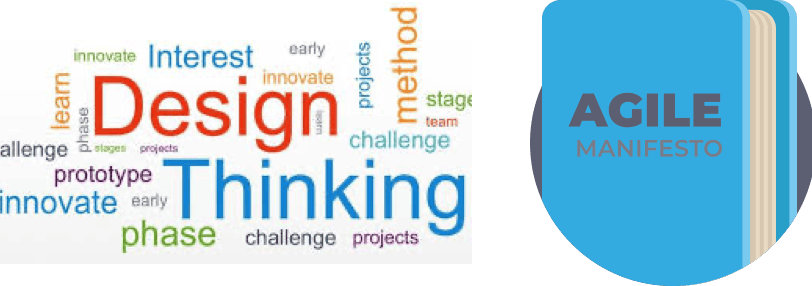
Design Thinking is another name for Agile Manifesto
Design Thinking and the Agile Manifesto complement each other and can be used in conjunction to foster a user-focused, iterative, and collaborative approach to problem-solving and project delivery.



Design Thinking and the Agile Manifesto are related but distinct concepts. They both share a focus on customer-centricity, collaboration, and iterative development, but they approach problem-solving and project management from different perspectives.
Design Thinking:
Design Thinking is a human-centered approach to problem-solving and innovation. It emphasizes understanding users' needs, motivations, and pain points to create products, services, or solutions that resonate with the target audience. The core principles of Design Thinking include empathy, defining the problem, ideation, prototyping, and testing. It encourages multidisciplinary teams to work together and iterate through solutions to arrive at the best possible outcome. Design Thinking is commonly used in product development, user experience (UX) design, and other creative endeavors.
Agile Manifesto:
The Agile Manifesto, on the other hand, is a set of guiding values and principles for software development and project management. It emerged in 2001 as a response to the traditional, plan-driven (waterfall) approaches, aiming to improve flexibility, adaptability, and customer satisfaction. The Agile Manifesto emphasizes responding to change over following a strict plan, customer collaboration over contract negotiation, and working software over comprehensive documentation. Agile methodologies, such as Scrum, Kanban, and Extreme Programming (XP), embody the principles outlined in the Agile Manifesto.
While both Design Thinking and the Agile Manifesto prioritize customer needs and iterative development, their primary applications differ. Design Thinking is commonly used in the early stages of product ideation and problem framing, while Agile methodologies are typically applied during the execution and development phases to deliver iterative, incremental improvements to software or projects.
In summary, Design Thinking and the Agile Manifesto complement each other and can be used in conjunction to foster a user-focused, iterative, and collaborative approach to problem-solving and project delivery.
